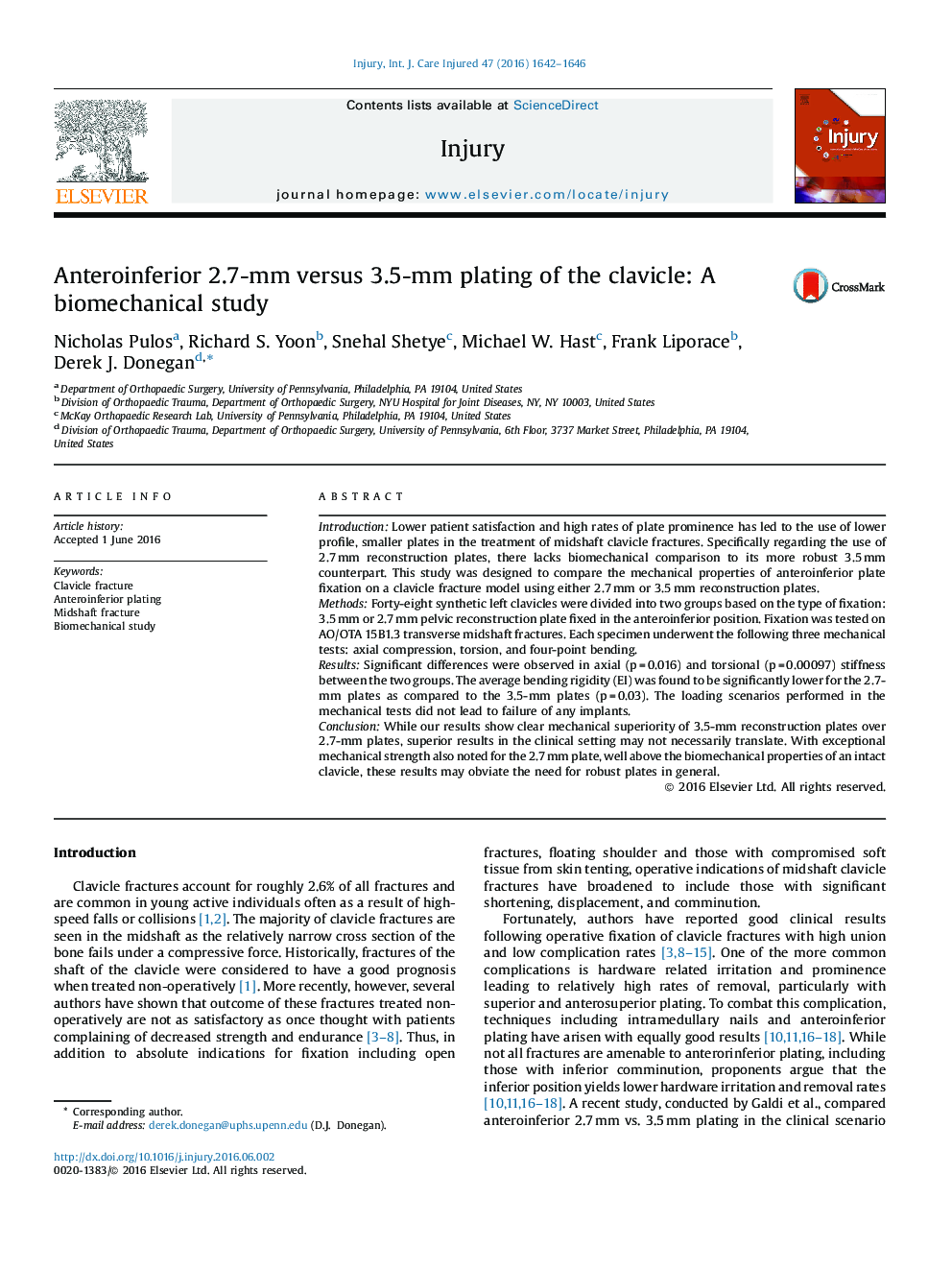| کد مقاله | کد نشریه | سال انتشار | مقاله انگلیسی | نسخه تمام متن |
|---|---|---|---|---|
| 6082615 | 1205970 | 2016 | 5 صفحه PDF | دانلود رایگان |

IntroductionLower patient satisfaction and high rates of plate prominence has led to the use of lower profile, smaller plates in the treatment of midshaft clavicle fractures. Specifically regarding the use of 2.7 mm reconstruction plates, there lacks biomechanical comparison to its more robust 3.5 mm counterpart. This study was designed to compare the mechanical properties of anteroinferior plate fixation on a clavicle fracture model using either 2.7 mm or 3.5 mm reconstruction plates.MethodsForty-eight synthetic left clavicles were divided into two groups based on the type of fixation: 3.5 mm or 2.7 mm pelvic reconstruction plate fixed in the anteroinferior position. Fixation was tested on AO/OTA 15B1.3 transverse midshaft fractures. Each specimen underwent the following three mechanical tests: axial compression, torsion, and four-point bending.ResultsSignificant differences were observed in axial (p = 0.016) and torsional (p = 0.00097) stiffness between the two groups. The average bending rigidity (EI) was found to be significantly lower for the 2.7-mm plates as compared to the 3.5-mm plates (p = 0.03). The loading scenarios performed in the mechanical tests did not lead to failure of any implants.ConclusionWhile our results show clear mechanical superiority of 3.5-mm reconstruction plates over 2.7-mm plates, superior results in the clinical setting may not necessarily translate. With exceptional mechanical strength also noted for the 2.7 mm plate, well above the biomechanical properties of an intact clavicle, these results may obviate the need for robust plates in general.
Journal: Injury - Volume 47, Issue 8, August 2016, Pages 1642-1646